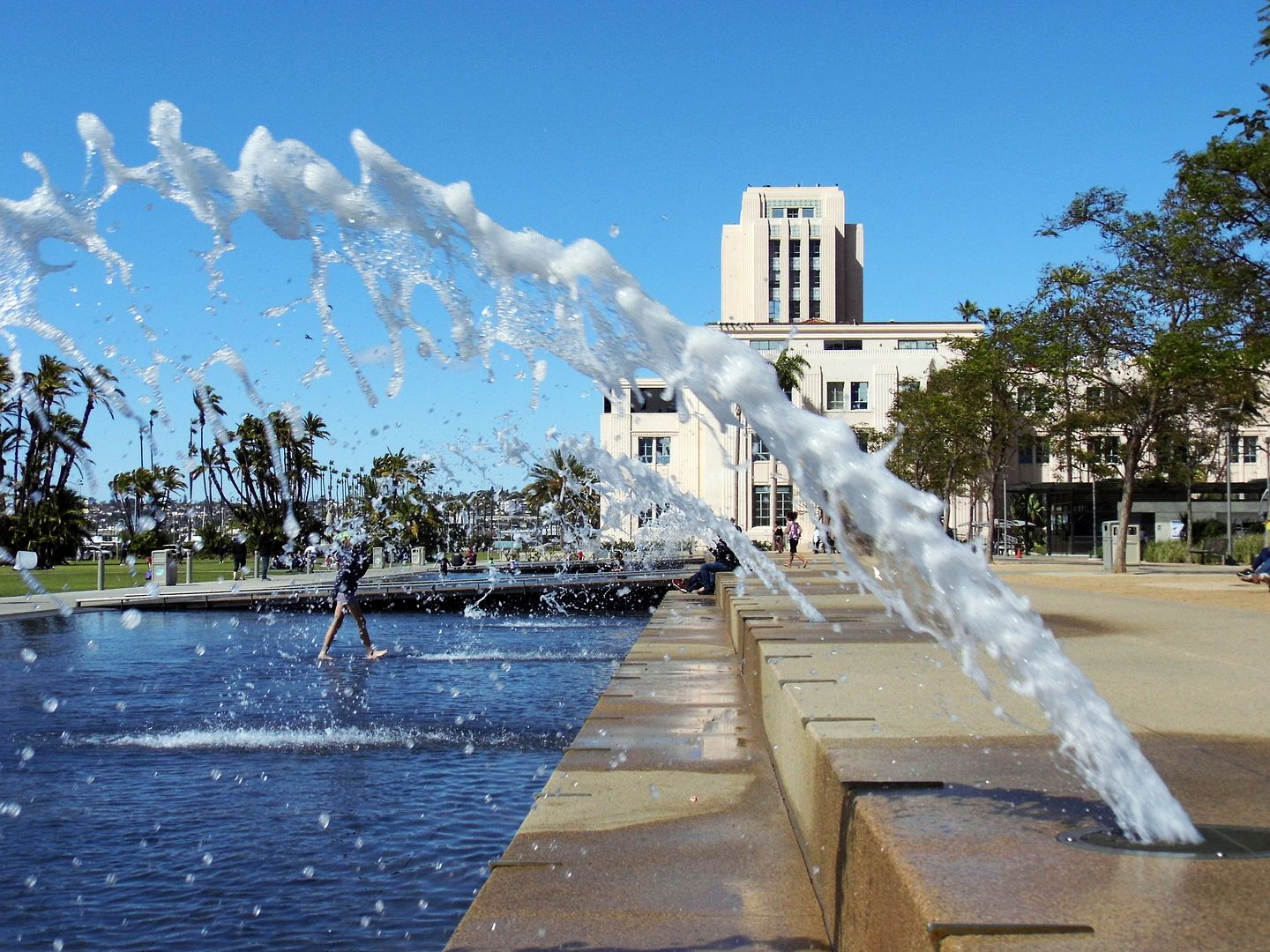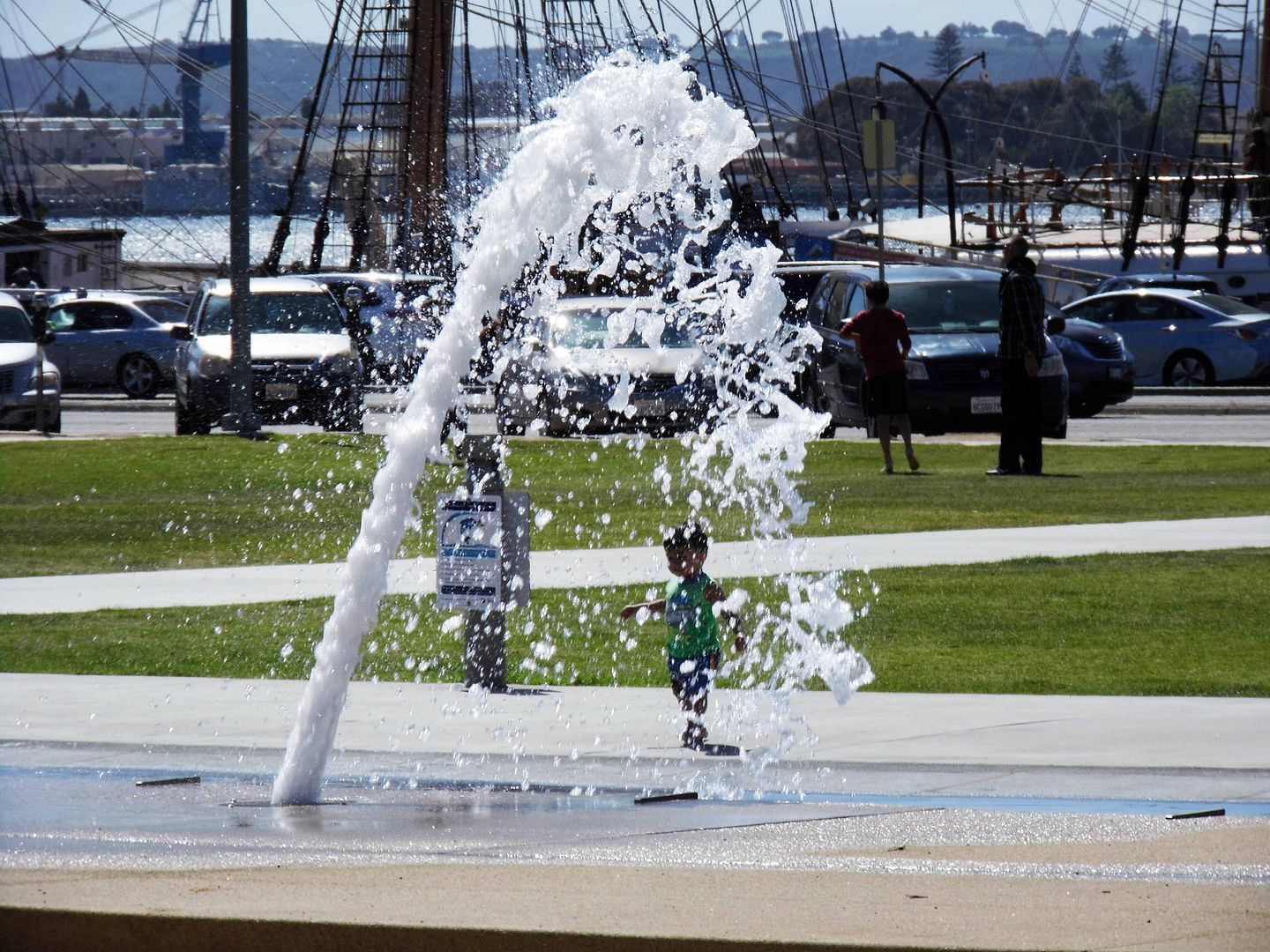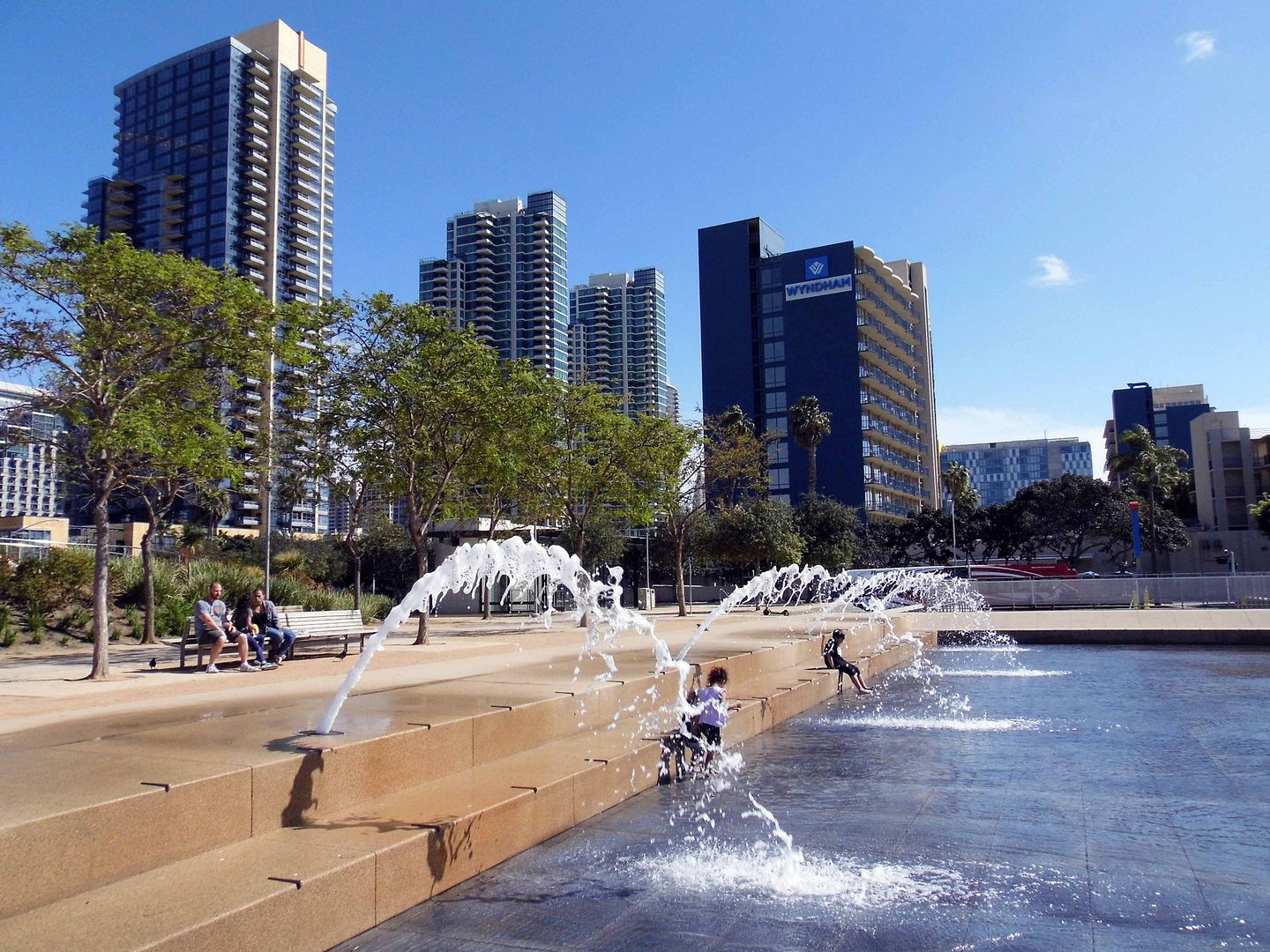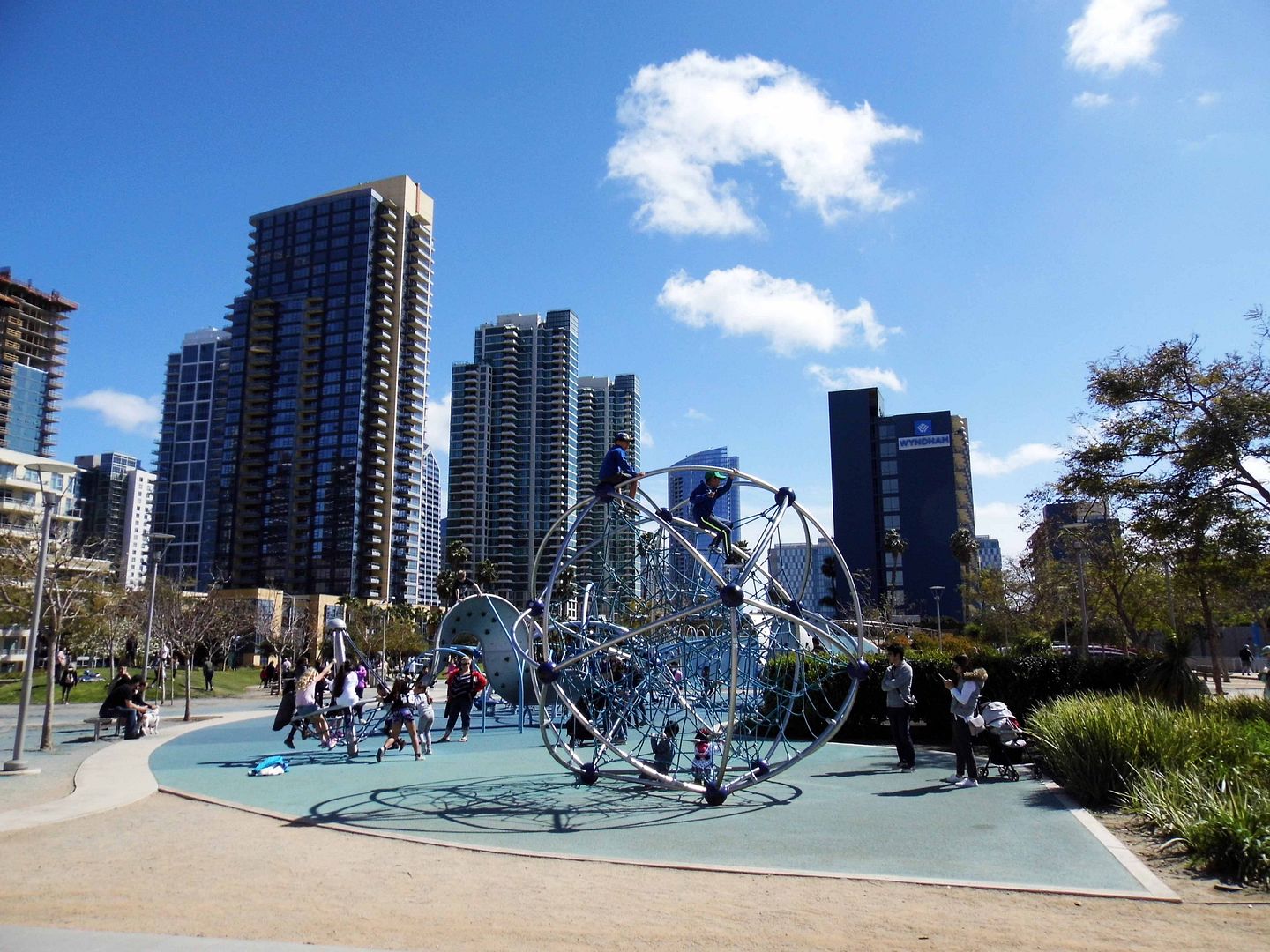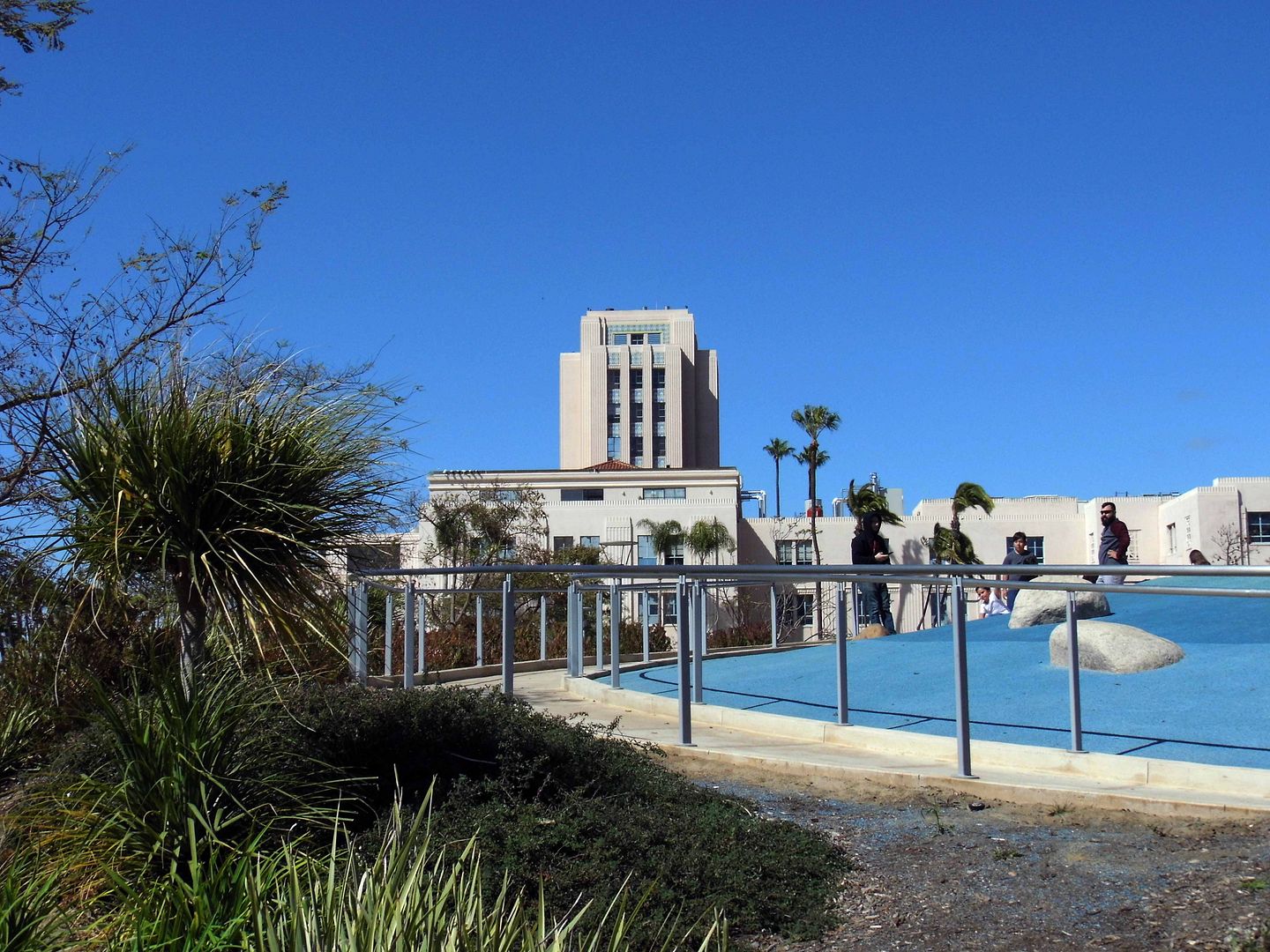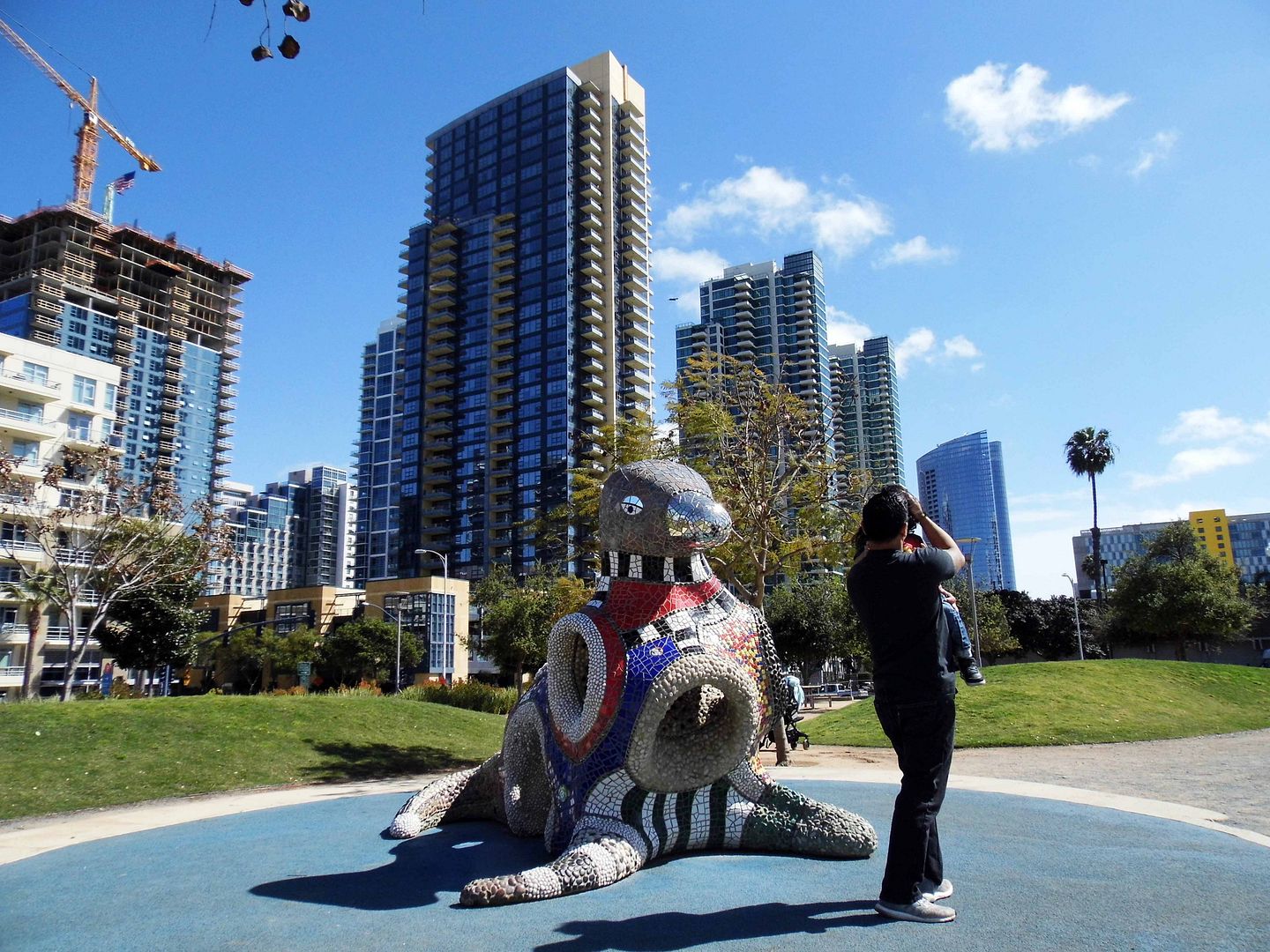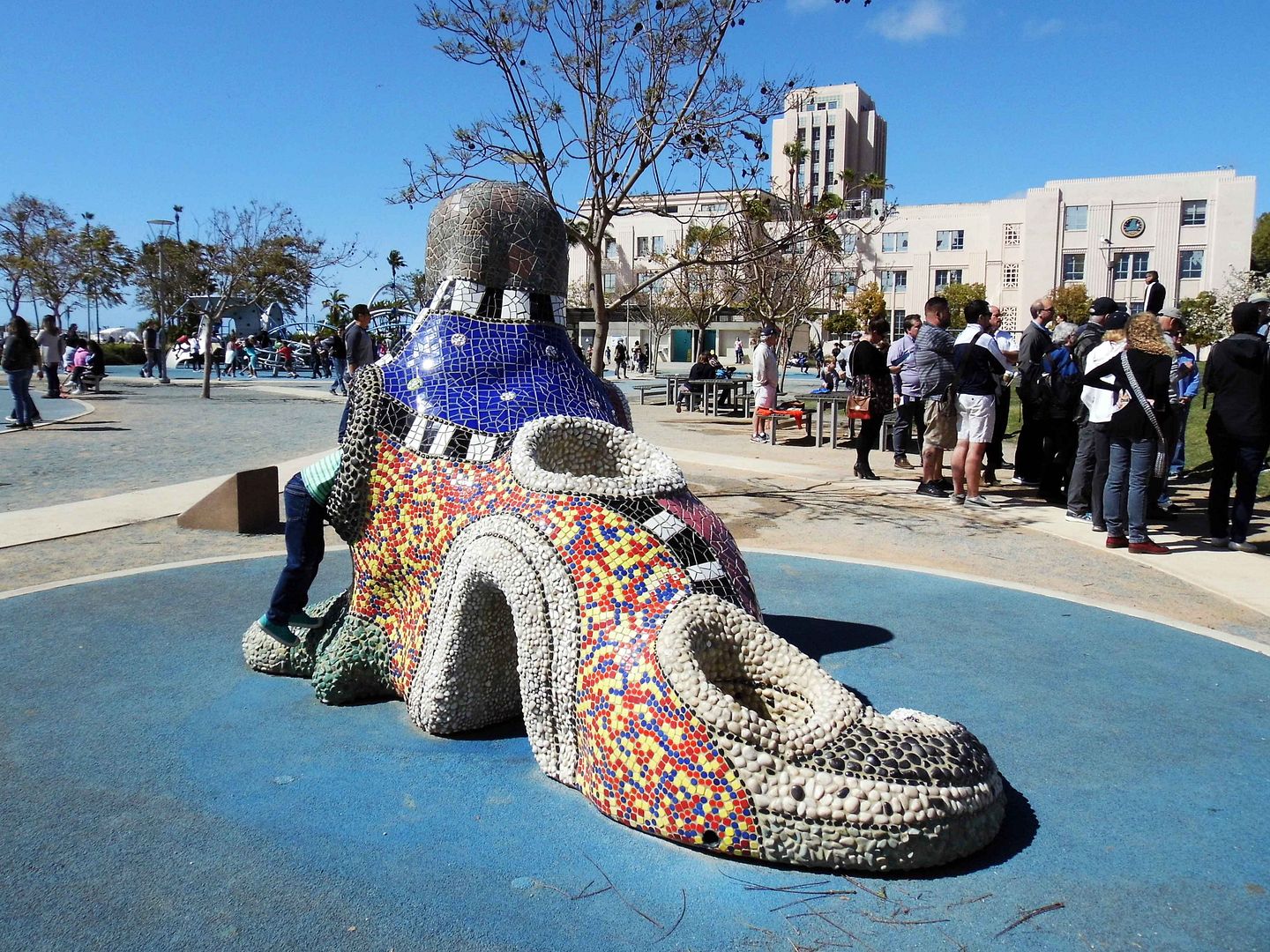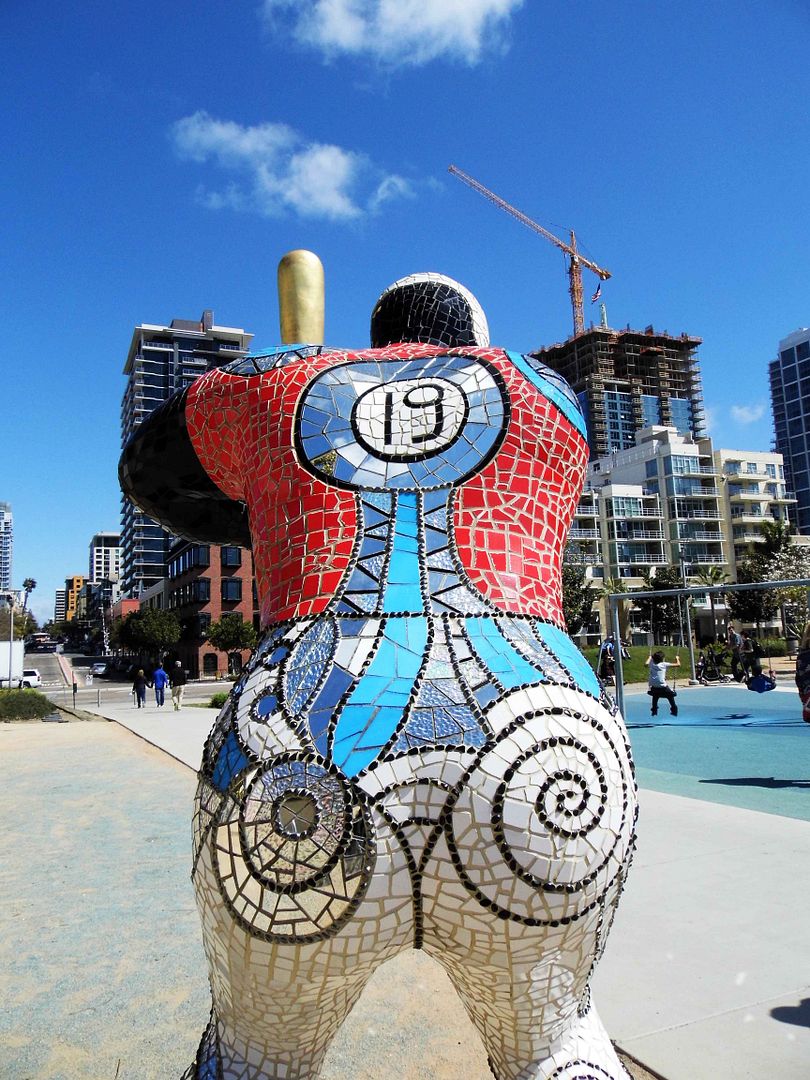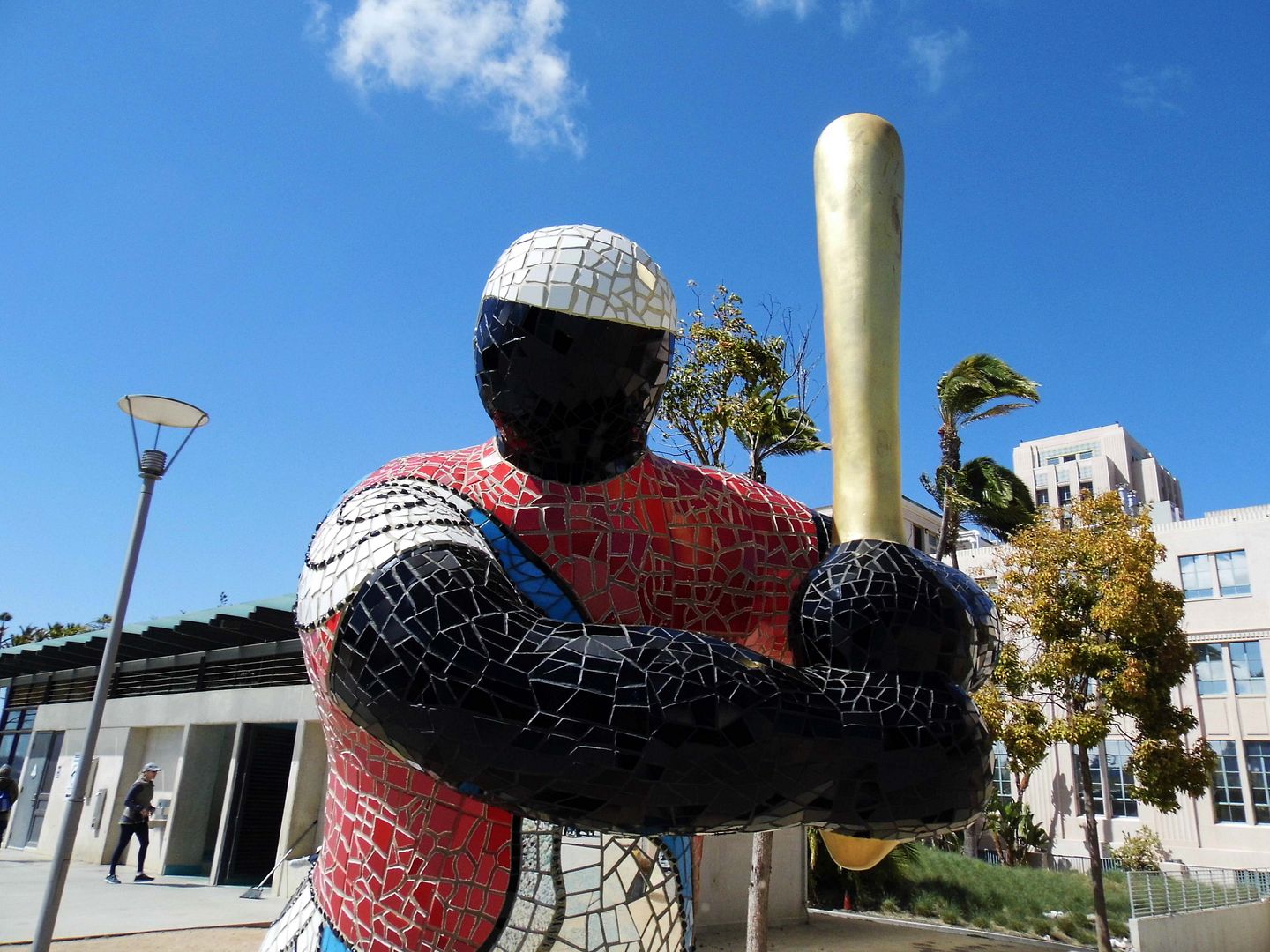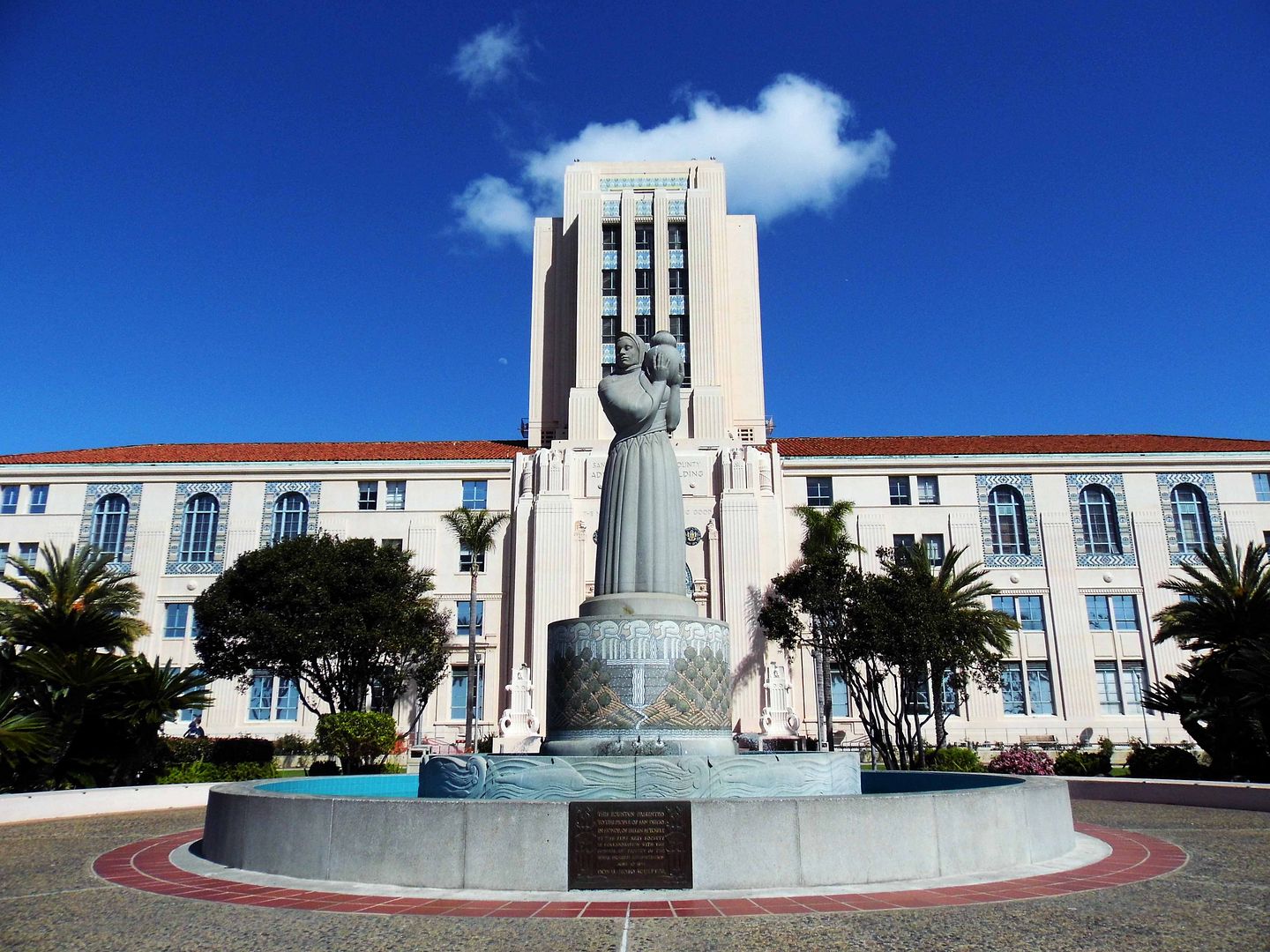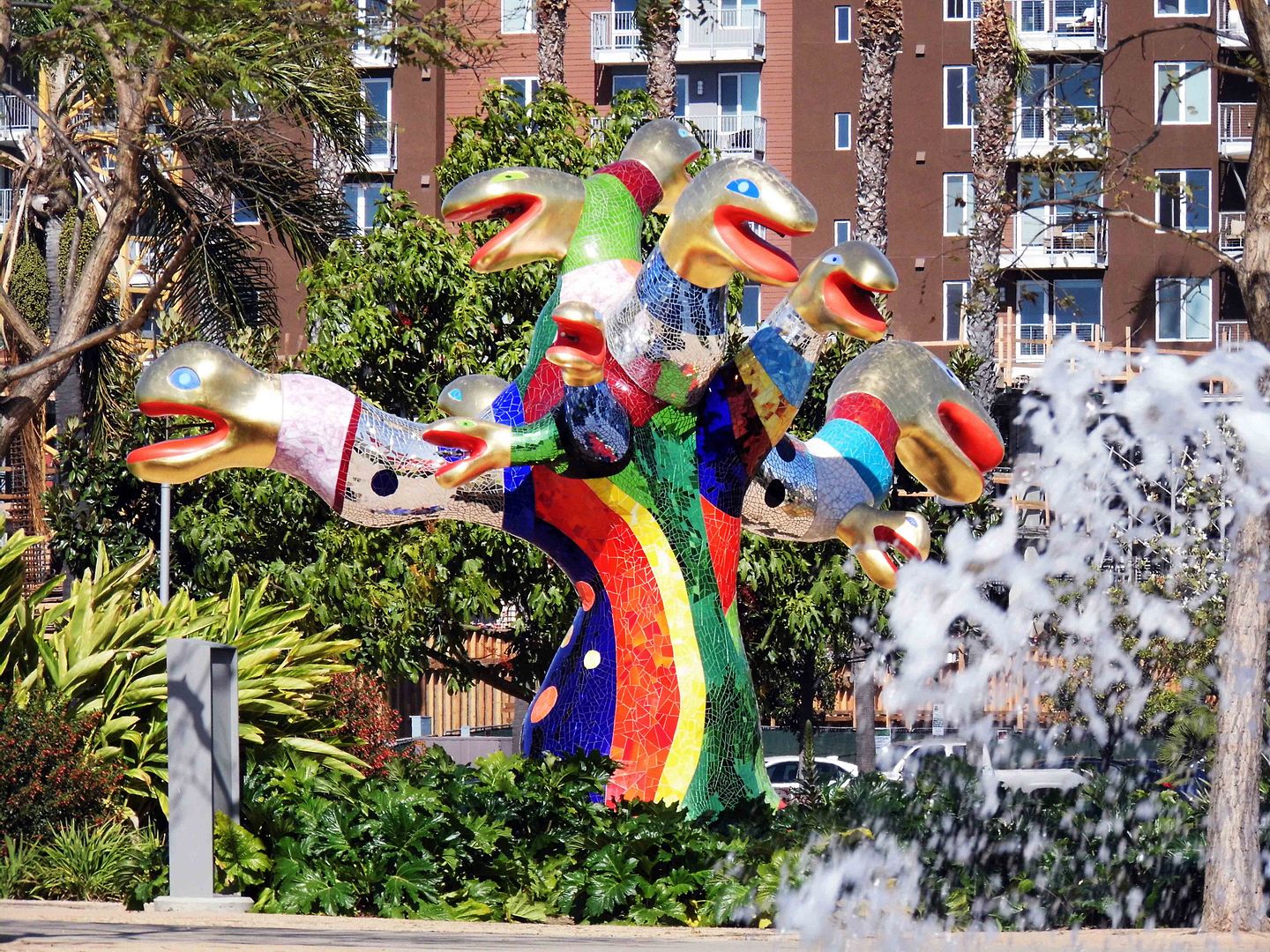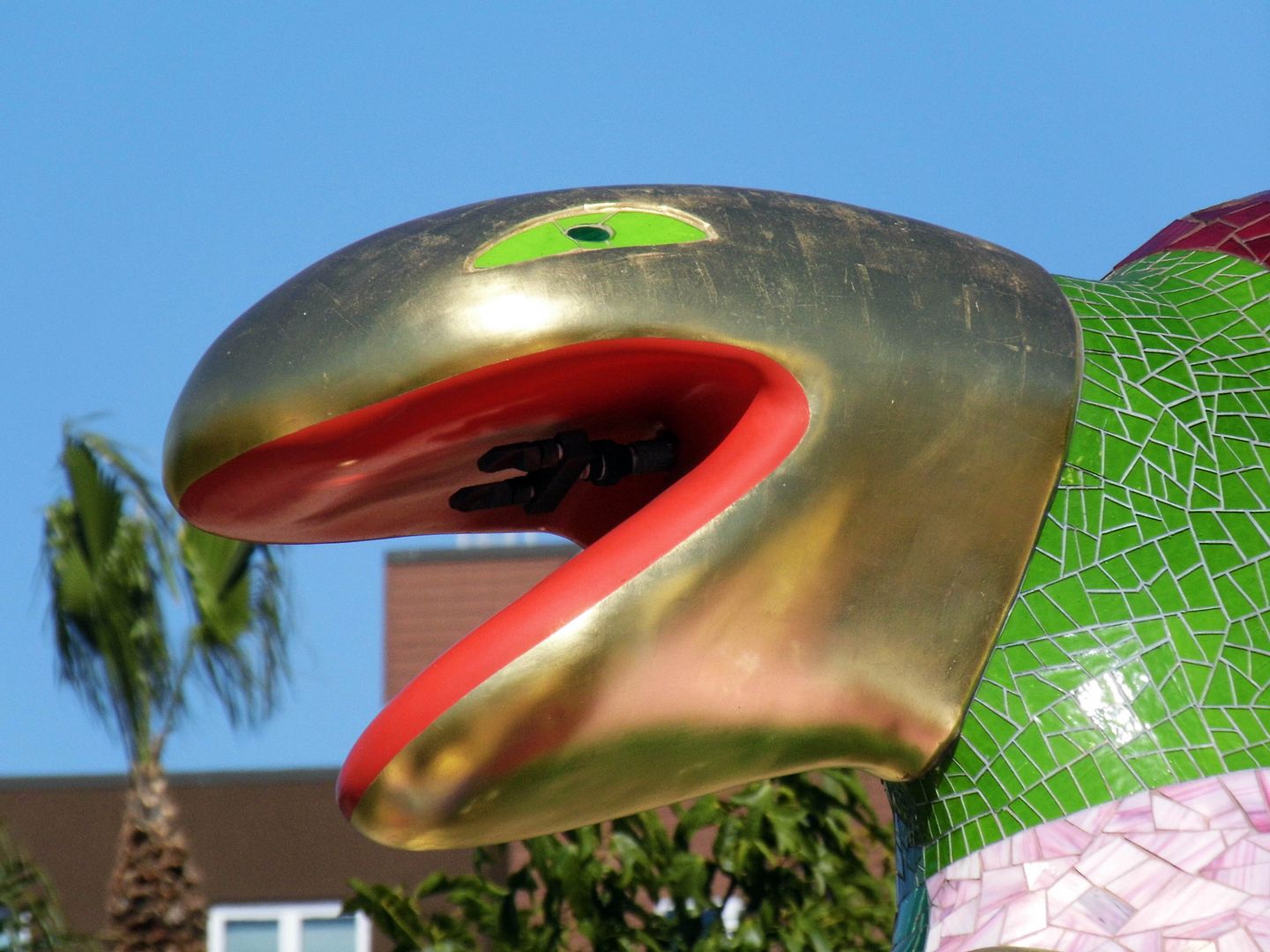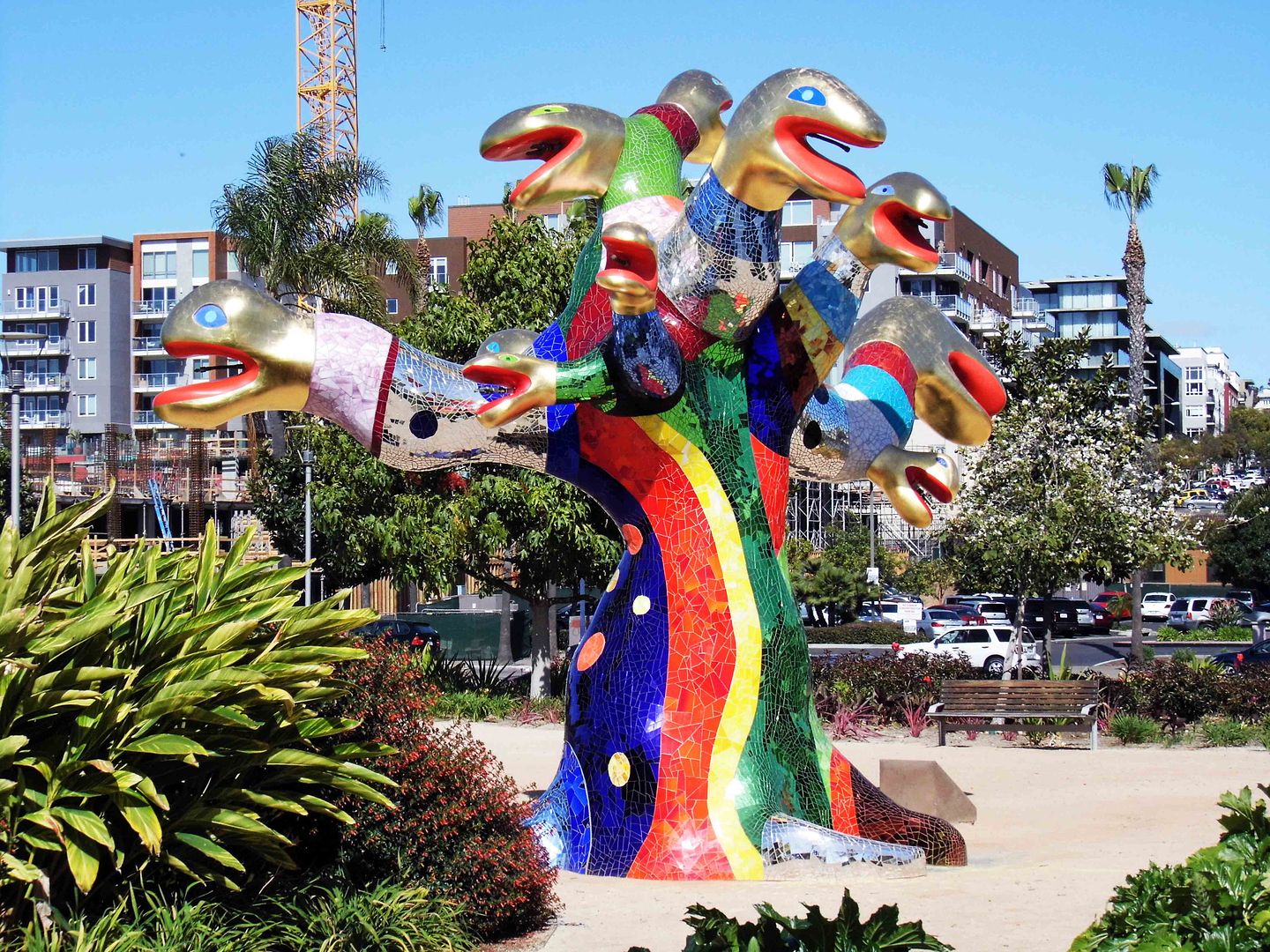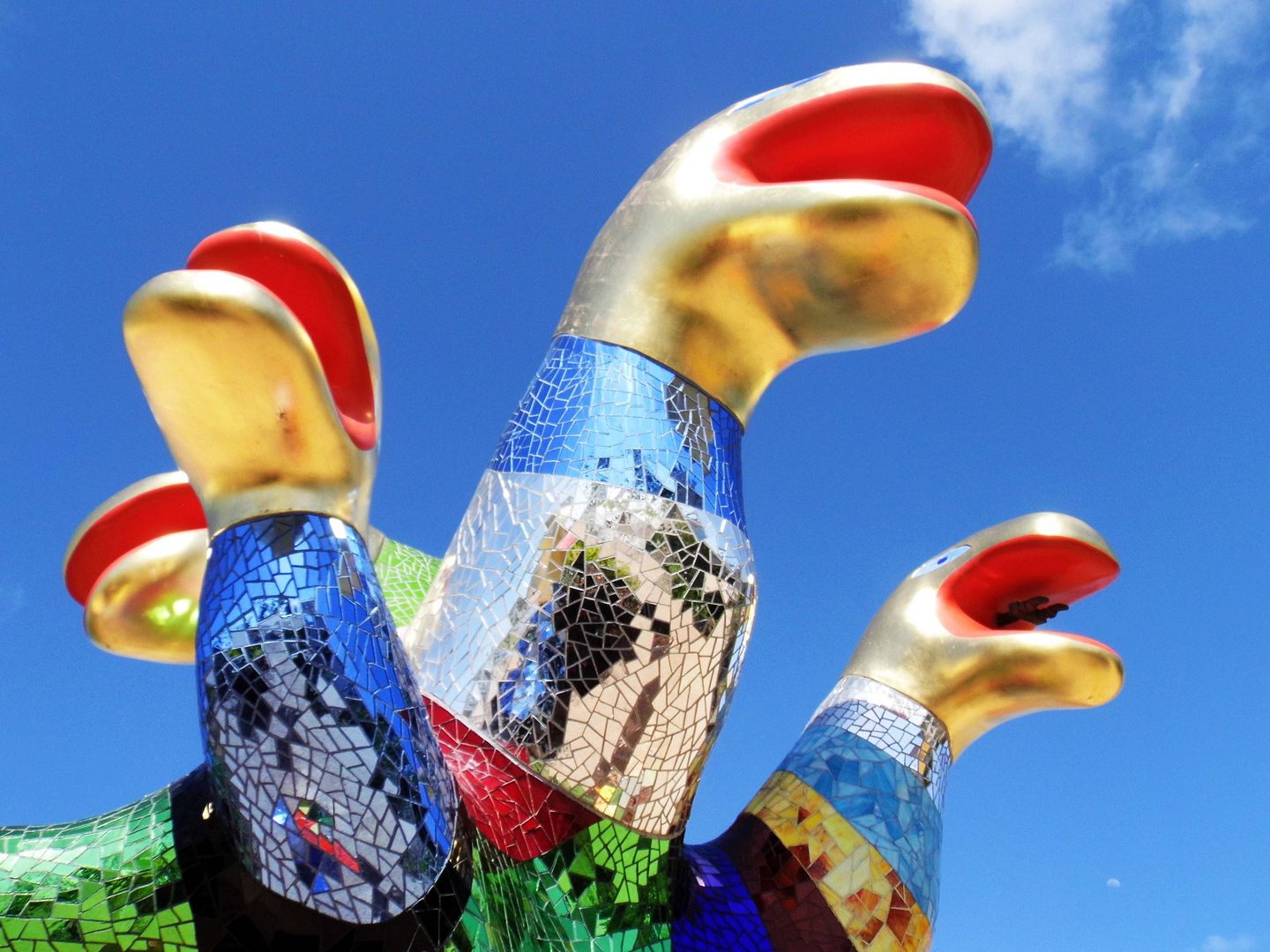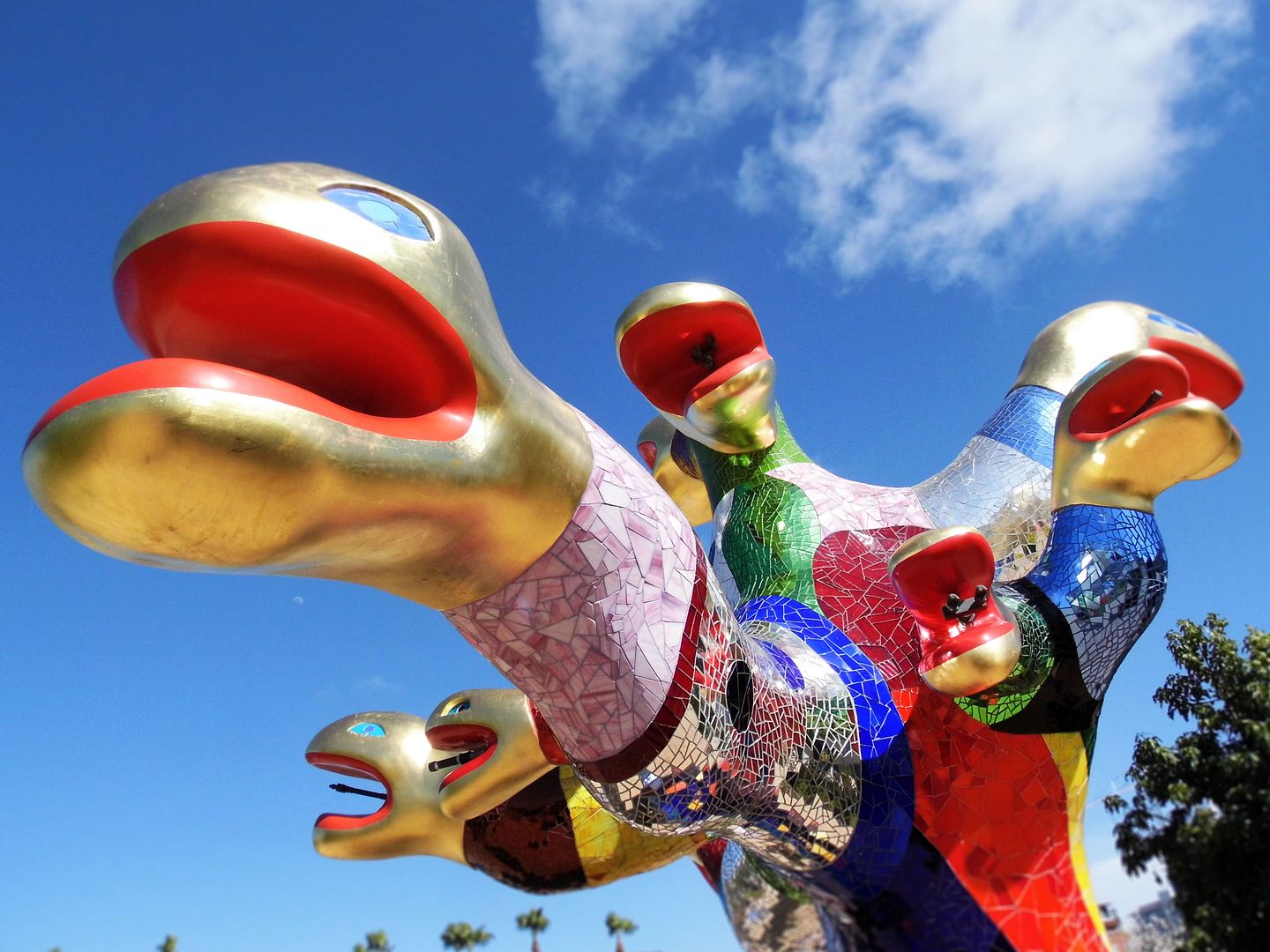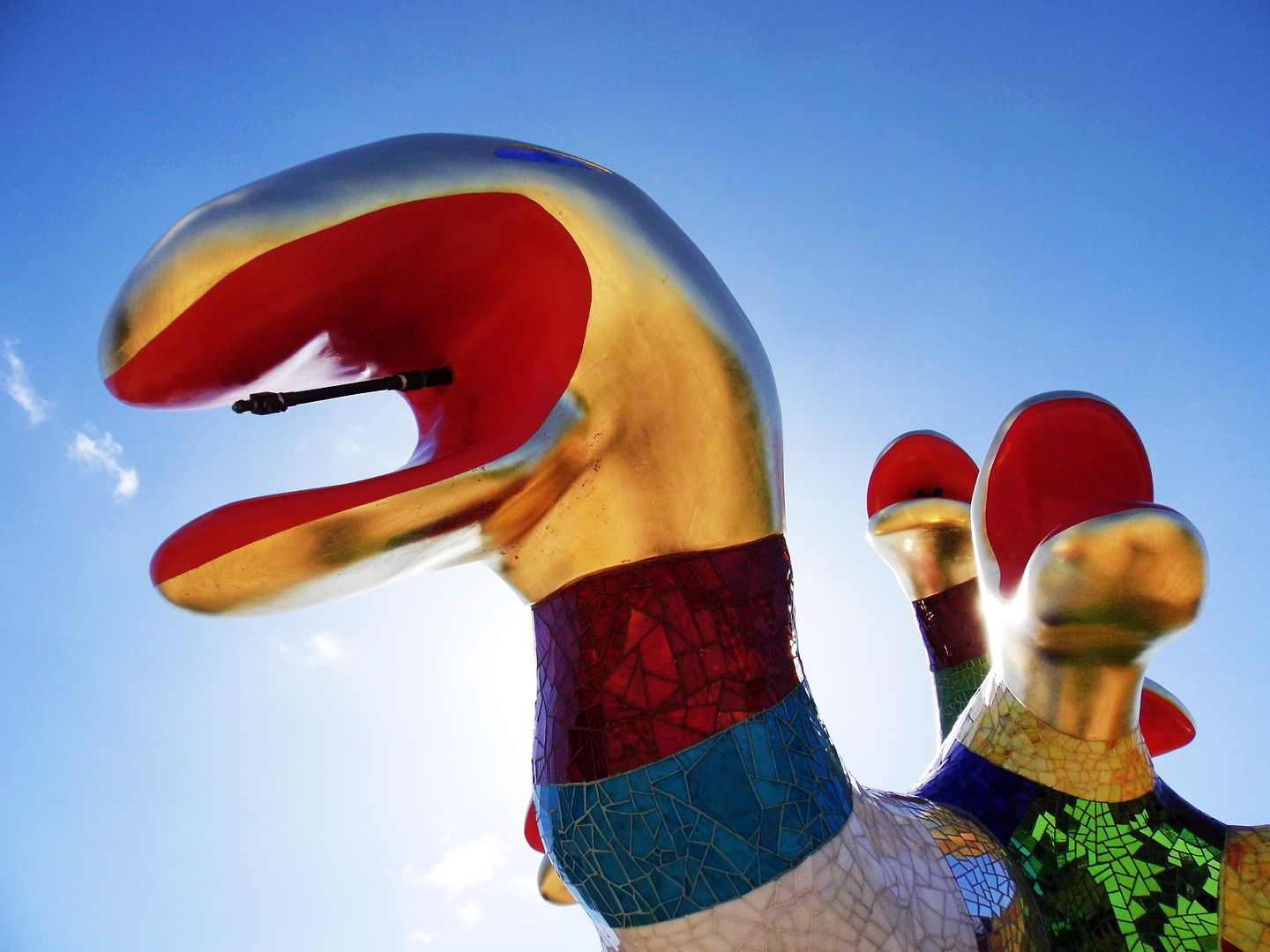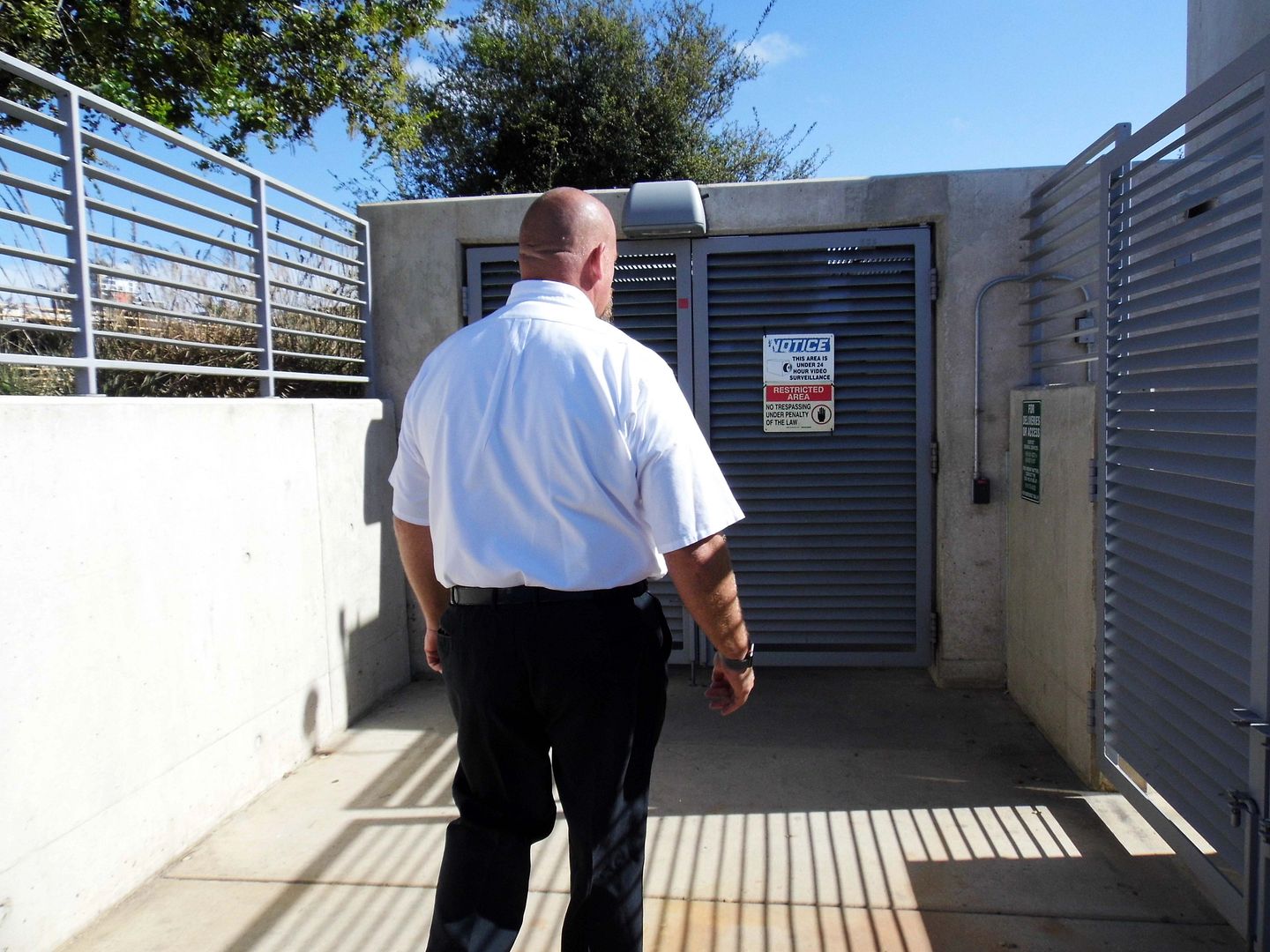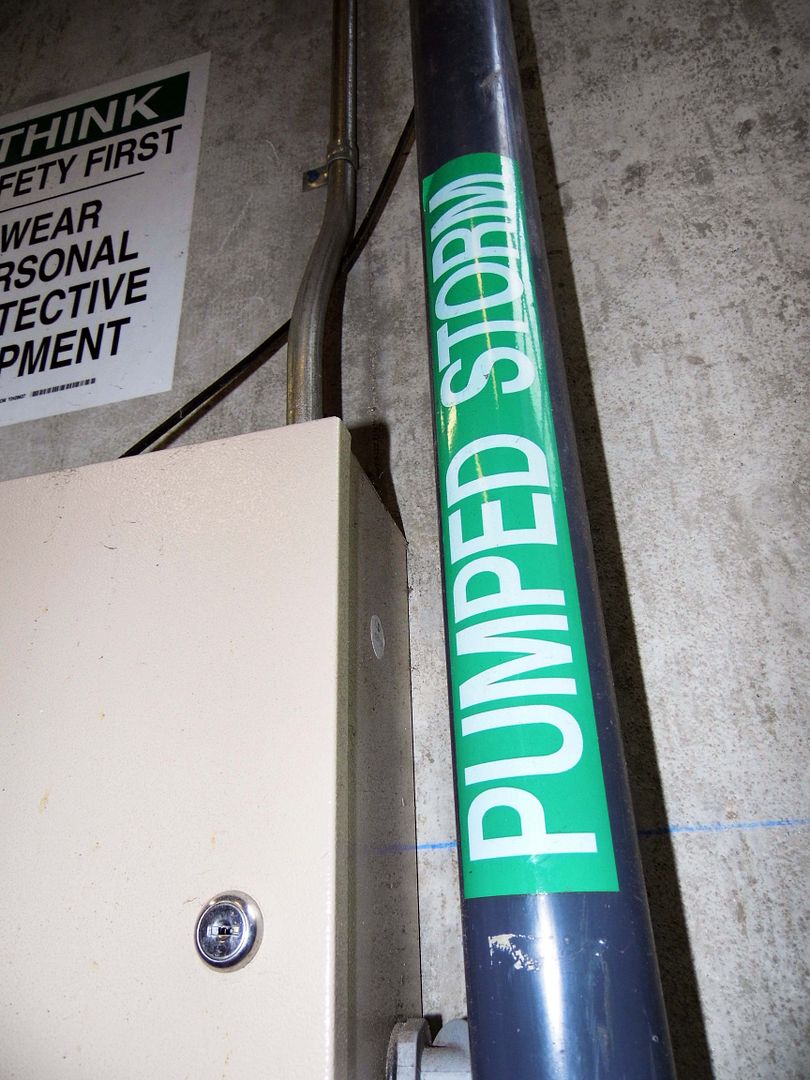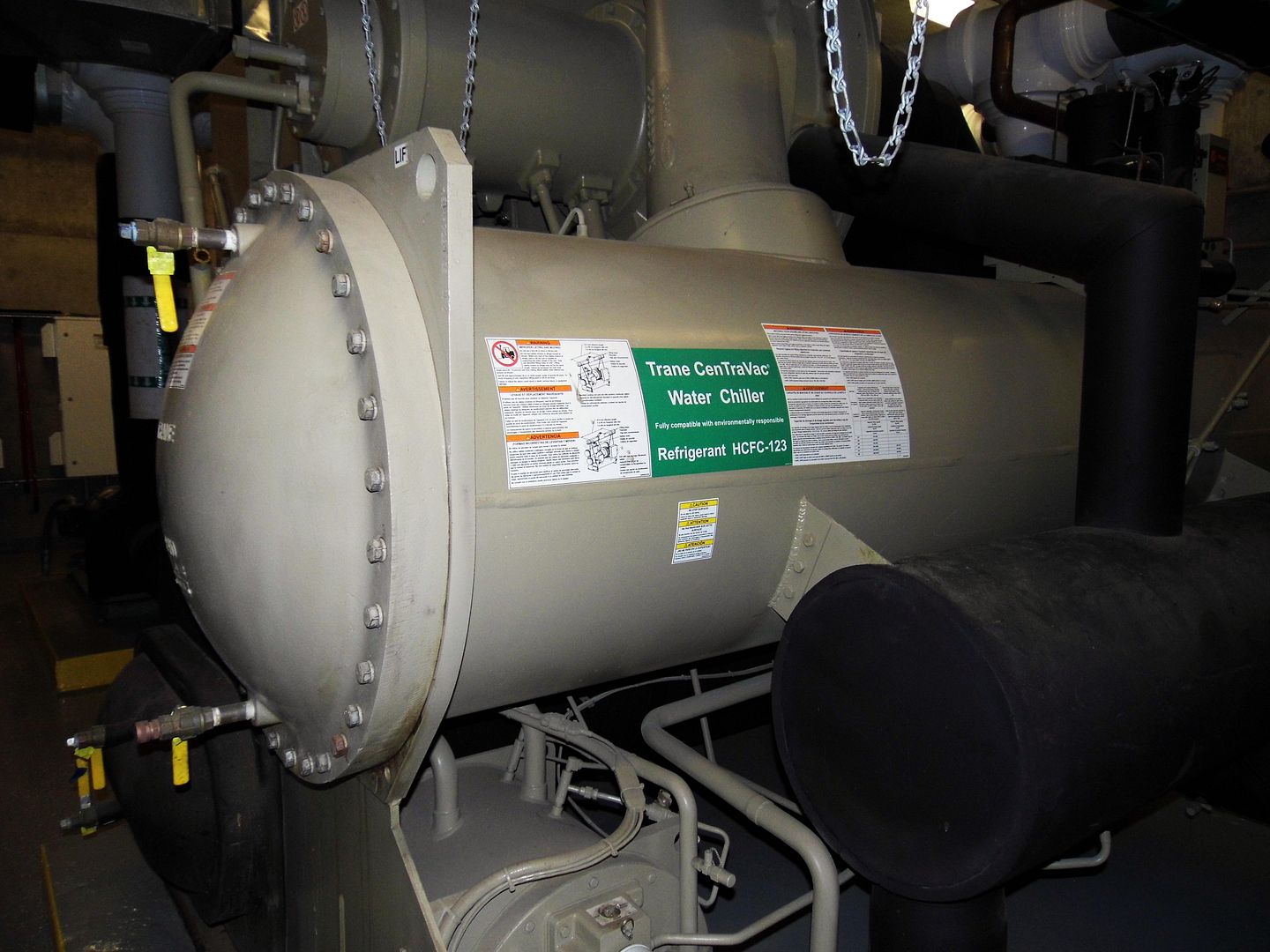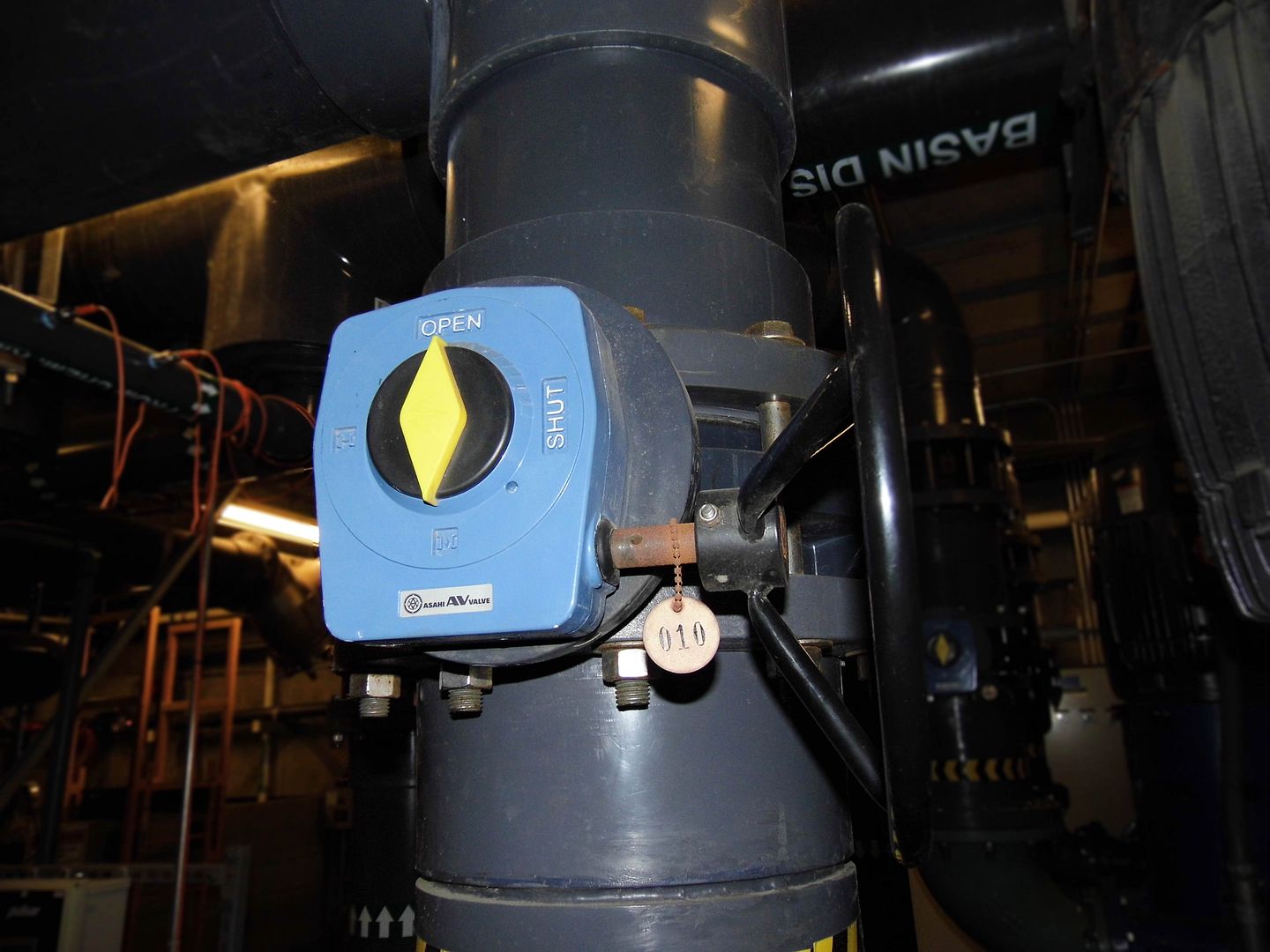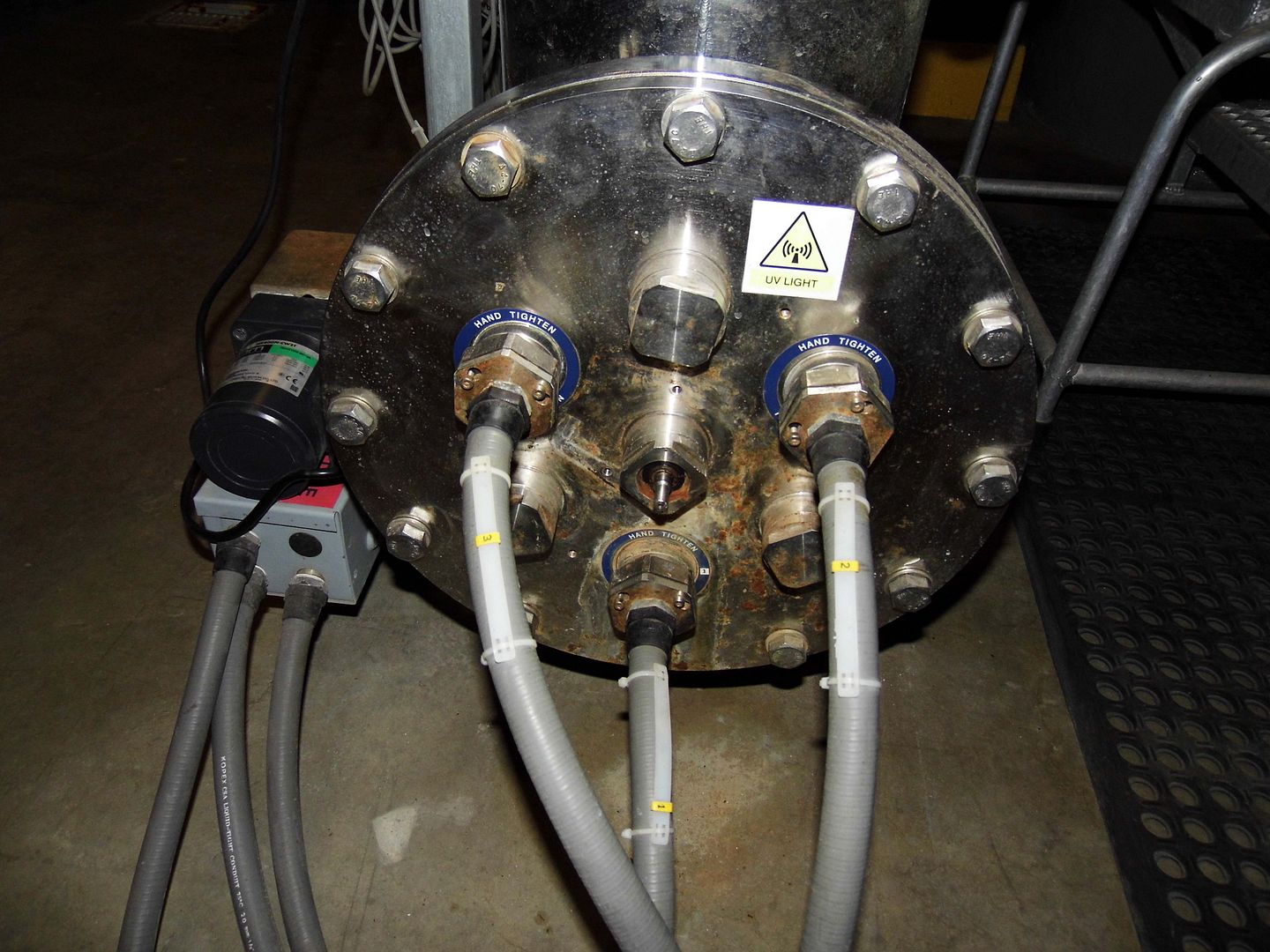The founder of San Diego may have been Alonzo Erastus Horton...
Photo: Circa 1971, Library of Congress
circa 2017
One of the sons of the wealthy "Sugar King" Claus Spreckels, who made is fortune off sugar beets and therefore beet sugar, the younger Spreckels left his hometown of San Francisco in the wake of the 1906 earthquake and fires and relocated his family to San Diego.
circa 2017
But he'd already been conducting business locally since before the turn of the last century, having bought the Hotel del Coronado, the San Diego Union and Tribune, multiple railways, the Coronado ferry, and Belmont Park.
circa 2017
And in 1912, as he ramped up to be a part of the citywide commemoration of the opening of the Panama Canal, he built the only building in Downtown San Diego that still bears his name......and that houses the eponymous theatre that became the first commercial playhouse West of the Mississippi.
Located on Downtown San Diego's version of Broadway, a stone's throw from the Gaslamp Quarter and across the street from the historic Sofia Hotel...
...the Spreckels Building rises six stories high and still functions as an office building.
In fact, the entrance to the theatre, under the late 1930s marquee, is actually also the entryway to the building itself...
...and the main access point to the offices upstairs.
That onyx and Carrera marble foyer feels more like that of a high-rise or hotel...
...and you don't even really realize where exactly you are until you spot the box office on your left.
This is The Grand Lobby.
Then, of course, once you make it past the ticket-taker...
...you face the historic concessions stand, the theatricality of which is unmistakable.
Photo: Circa 1971, Library of Congress
...and architect Harrison Albright must've known just what Spreckels wanted...
...as he'd also designed his organ pavilion in Balboa Park (also built for the Panama-California Exposition) and his mansion on Coronado Island (now the Glorietta Bay Inn).
And that includes the constant reminders of who we have to thank for the lovely building—because you'll find a calligraphy-style "S" on nearly everything.
Spreckels Theatre was built as a legit playhouse—but eventually, motion pictures became just too big to ignore...
Photo: Circa 1971, Library of Congress
Then, in 1976, perhaps after a few too many kung fu movies, its then-owner and operator Jacquelyn Metzger Littlefield (*who was still more or less in charge until her death at age 96 in January 2019) brought the Spreckels back to a live format...
...and since that time, it's been thriving as a performing arts venue (with the occasional Broadway touring company renting out the house and even bands like Metallica rattling the rafters).
While the auditorium was originally built to hold 1915 seats, that number has expanded and contracted over time depending on the type of seats and their configuration. (Case in point: the upper balcony stands, where audience members once sat directly on the risers, though there are seats installed there now). It now seats just under 1500 in the orchestra, mezzanine, and upper balcony sections as well as the opera boxes.
The stage, which measures 82' x 58', is supposedly one of the largest ever constructed.
Even in the nosebleed seats, the acoustics are crisp and the sightlines are unobstructed.
Besides, up there is where you can get up close to the ceiling murals by Emil Mazy that decorate the center oculus and the medallions that surround it...
...and that depict, respectively, Dawn as well as Air, Water, Fire and Earth.
Although the theatre underwent a restoration for its centennial in 2012, there's still quite a patina left on its upper reaches, making it difficult to work out the details as you gaze heavenward.
Not satisfied with just seeing the theatre itself (or even standing on its huge stage), during my Open House San Diego visit I just had to take the elevator to explore the rest of the Spreckels Building.
The original tiled floors continue throughout the upper floors as well, though the walls and much of the rest of the interior appear to have been scrubbed of most other historical traces.
But looks may be deceiving—because there are more than a few secrets to this building, some of which perhaps only the ghosts can tell you how to find.
And we know for a fact that there used to be a secret passageway from the theatre into the men's room of the street level restaurant (then known as the Theater Buffet and Bar, now Dobson's). Maybe there still is.
Or maybe there's another that hasn't been rediscovered yet.
Related Posts:
Photo Essay: The World's Largest Outdoor Pipe Organ
Photo Essay: The View from Above Balboa Park's Former Expo Grounds


